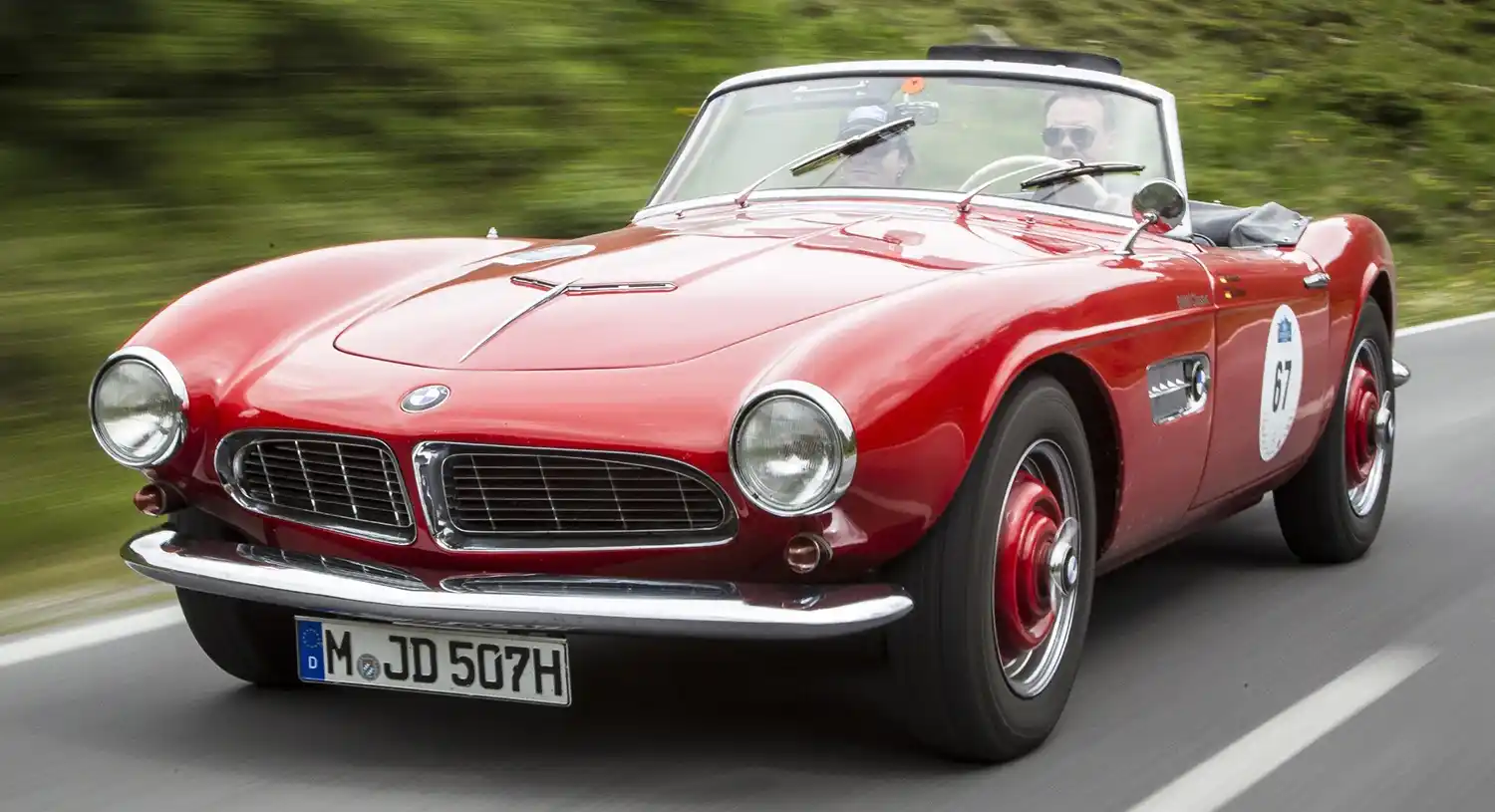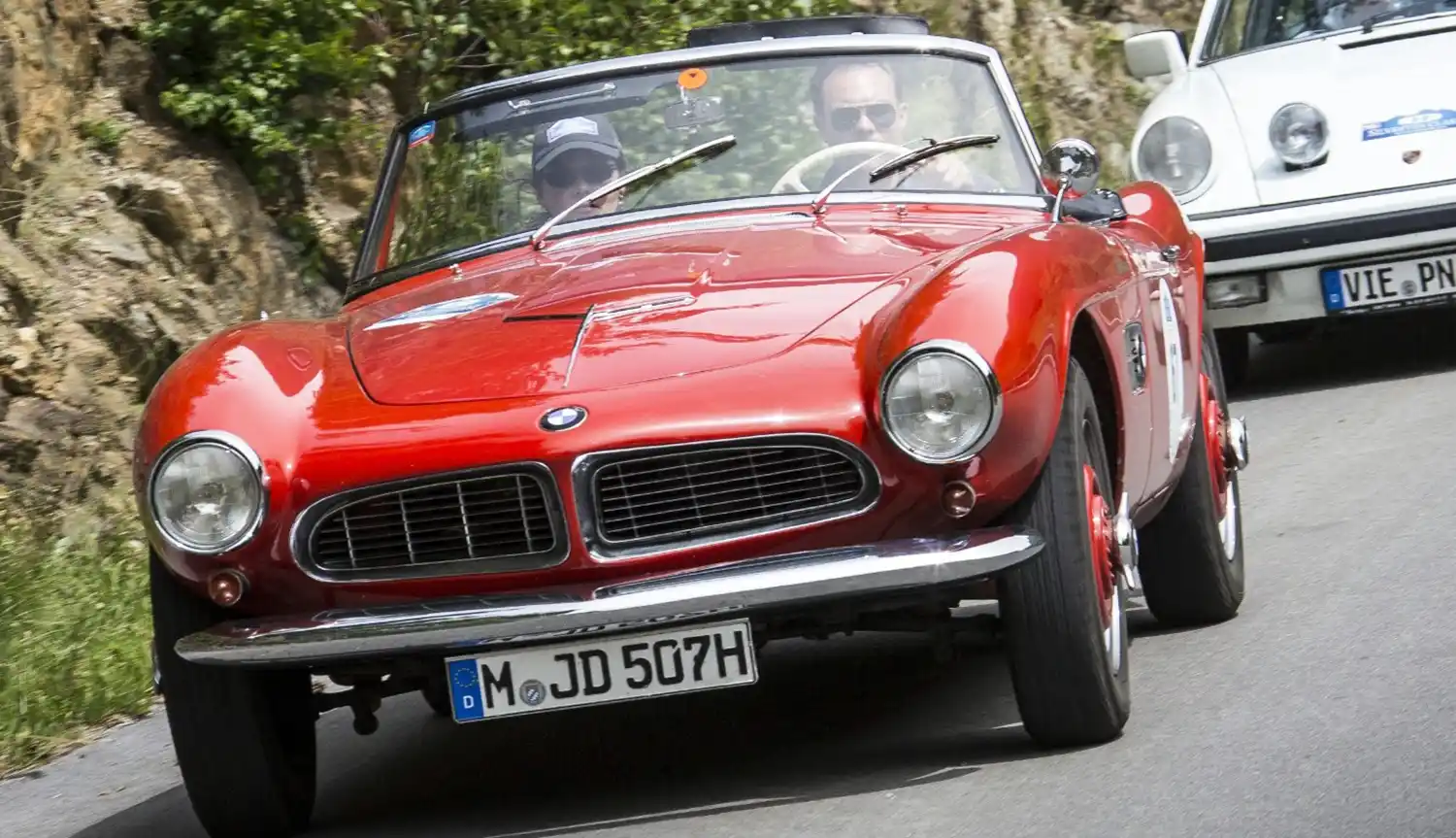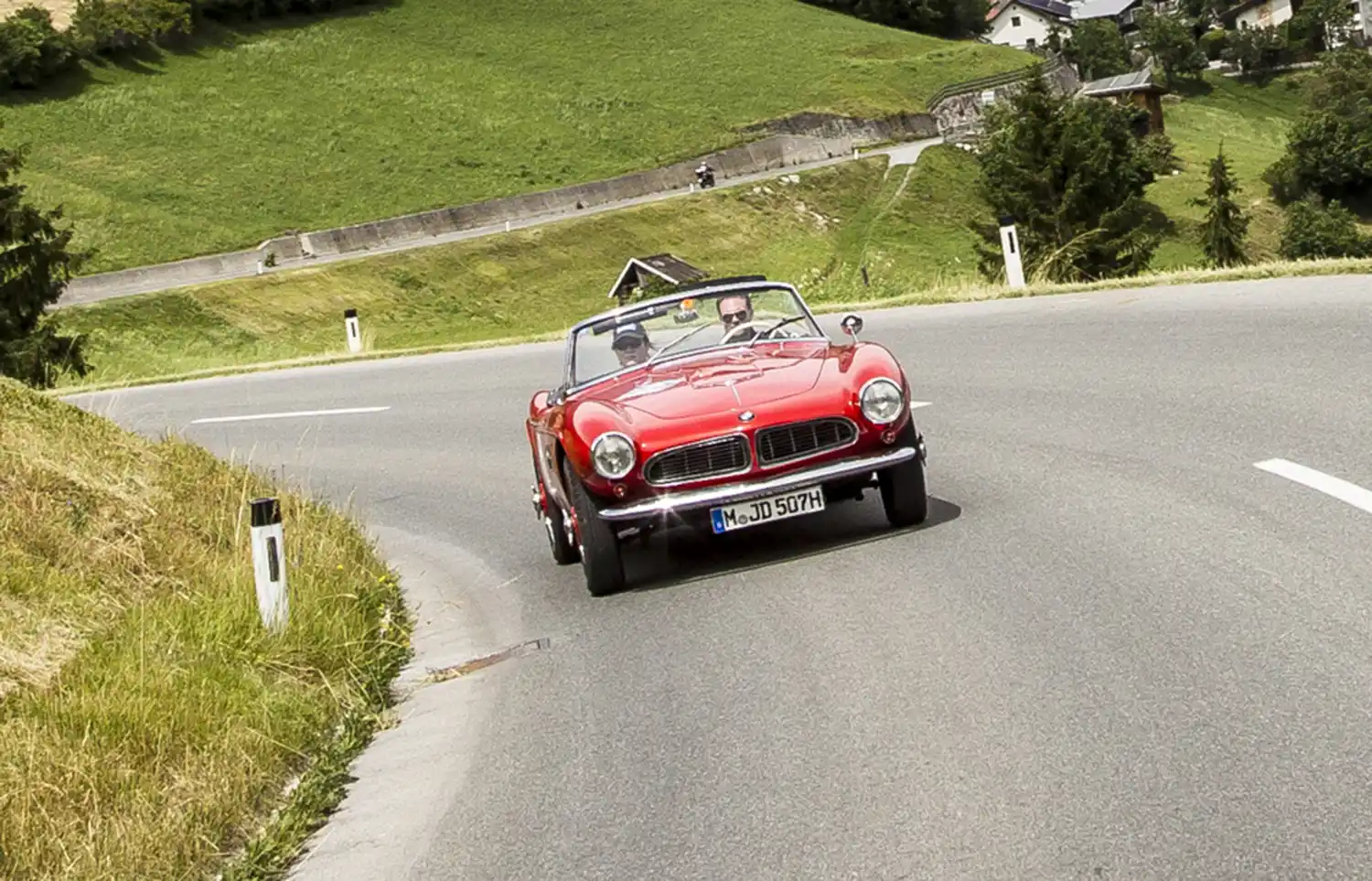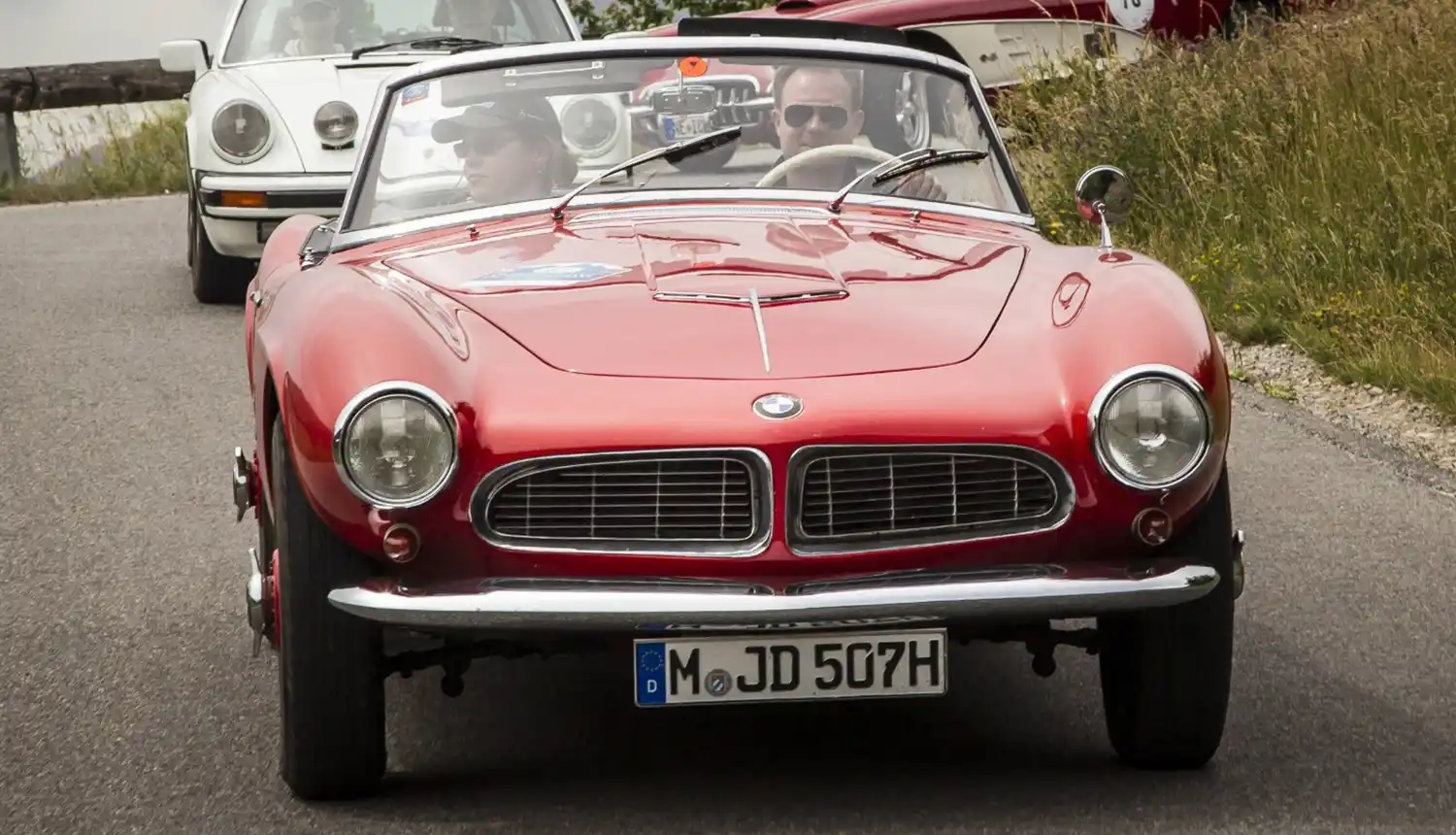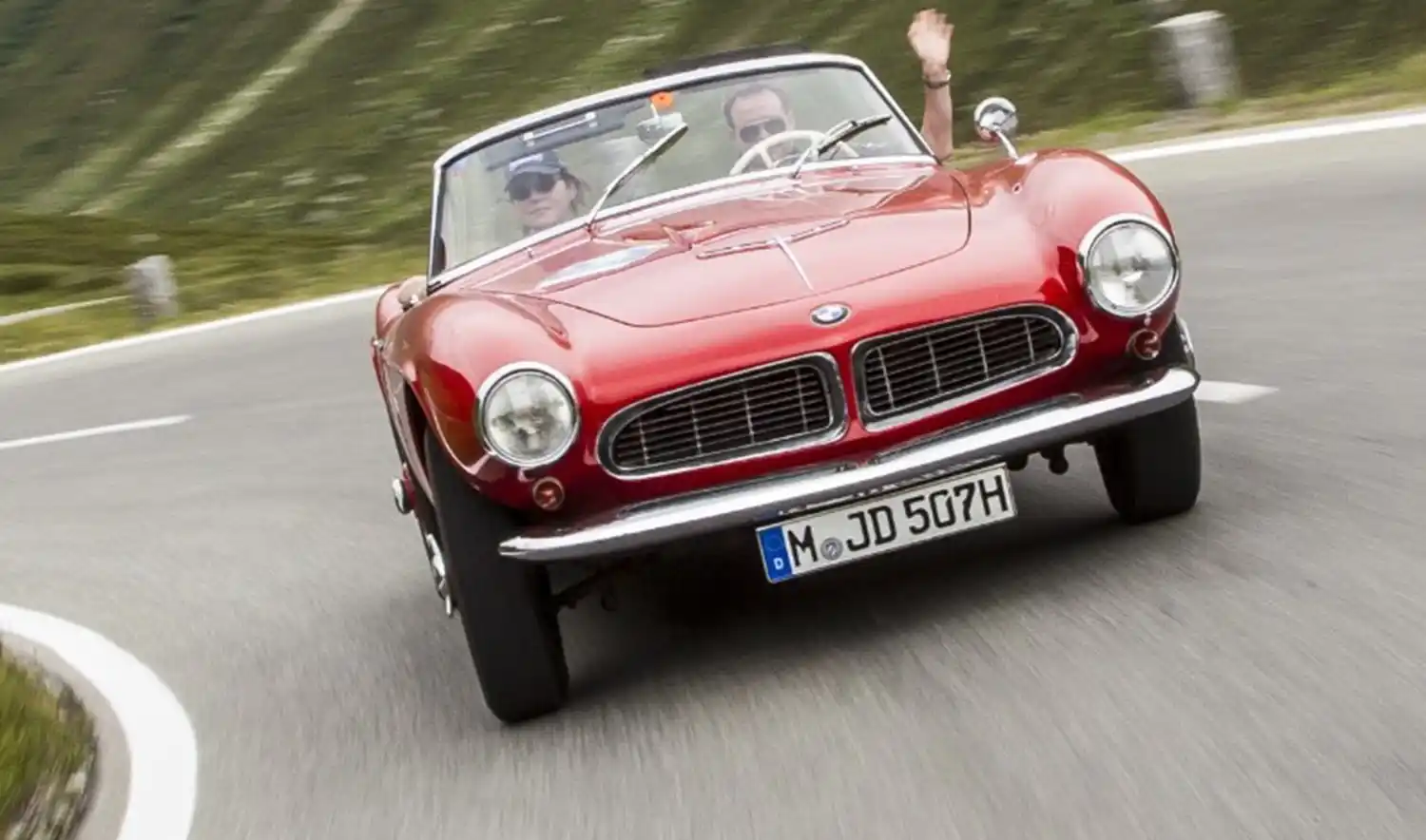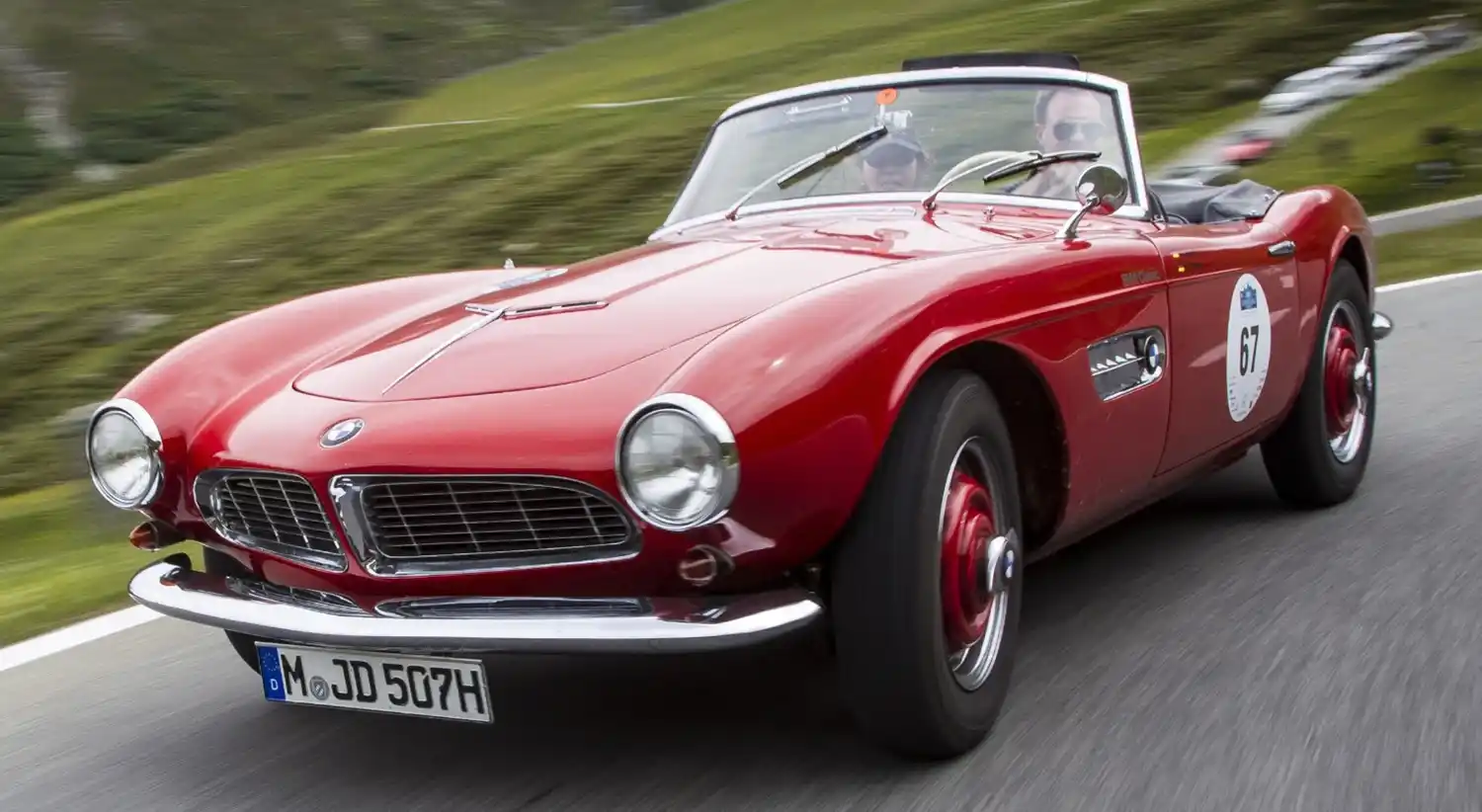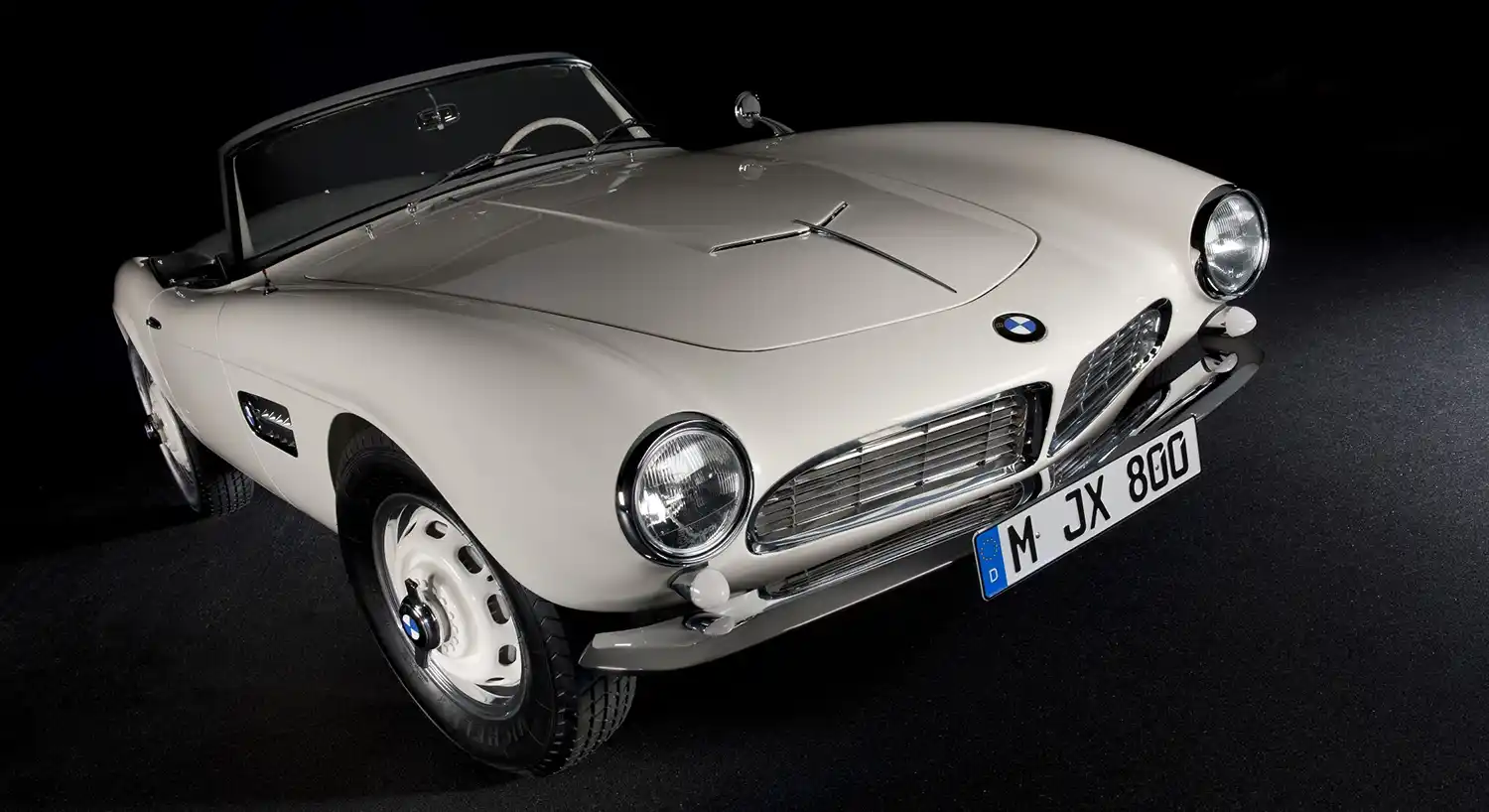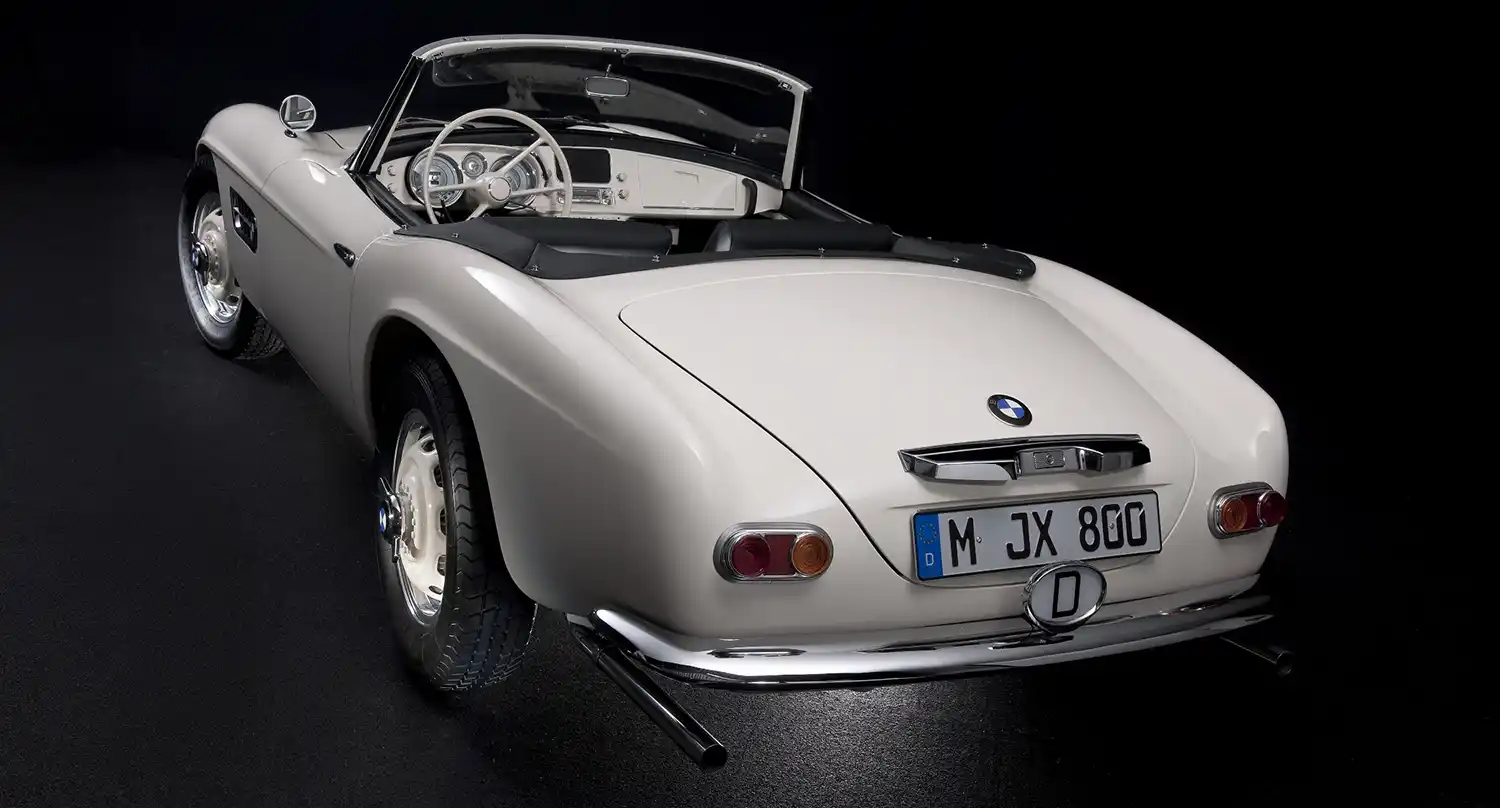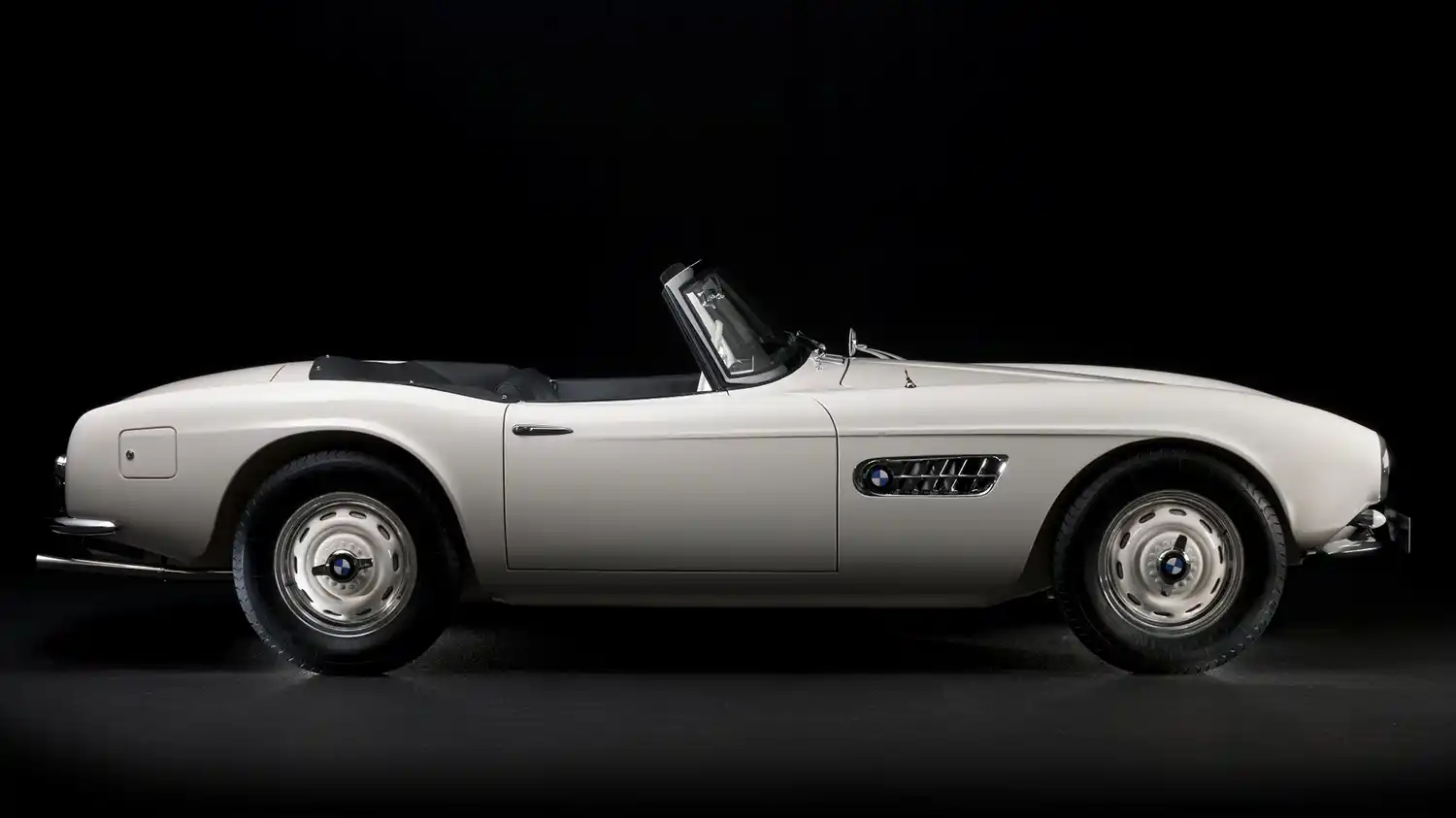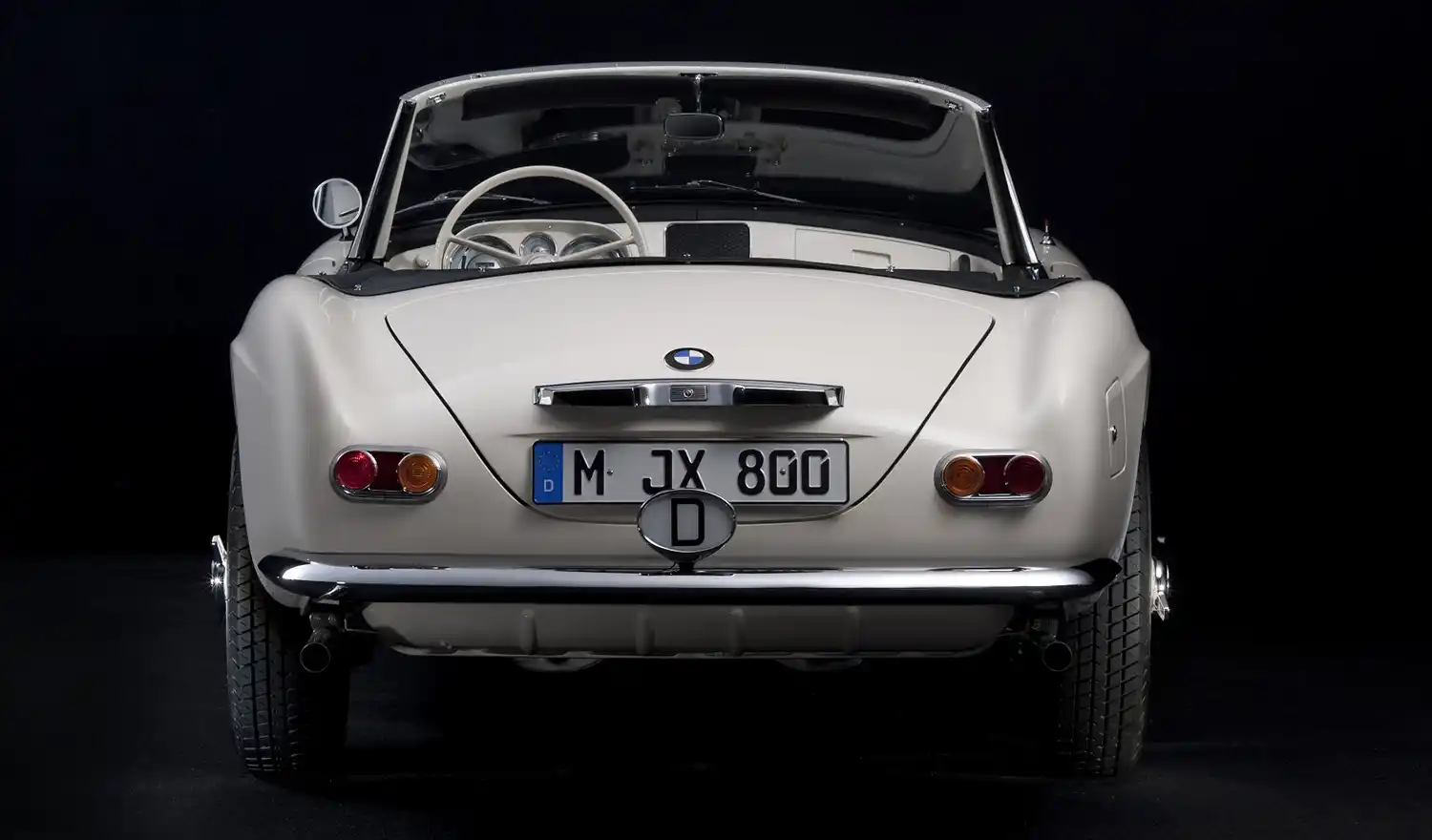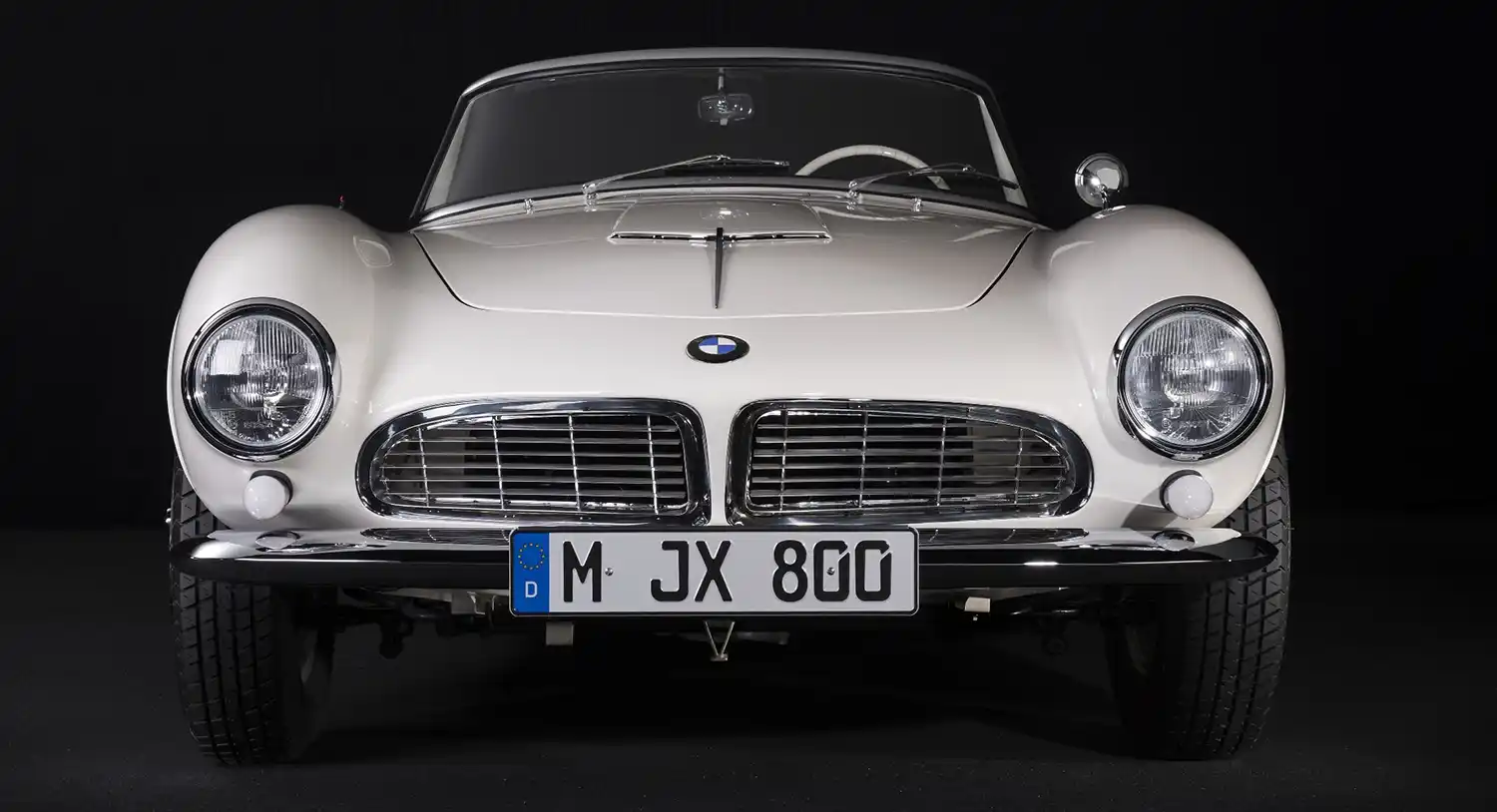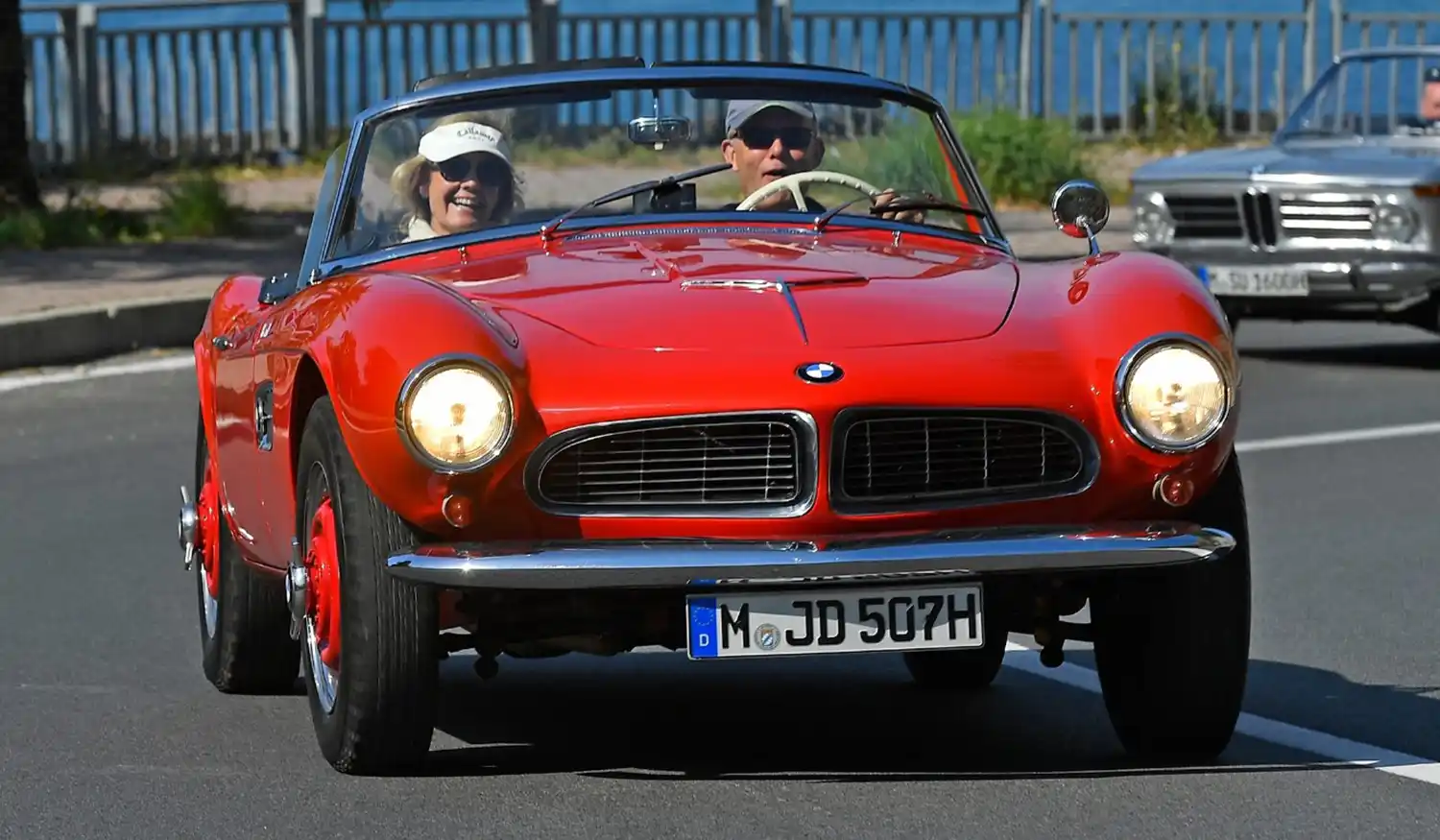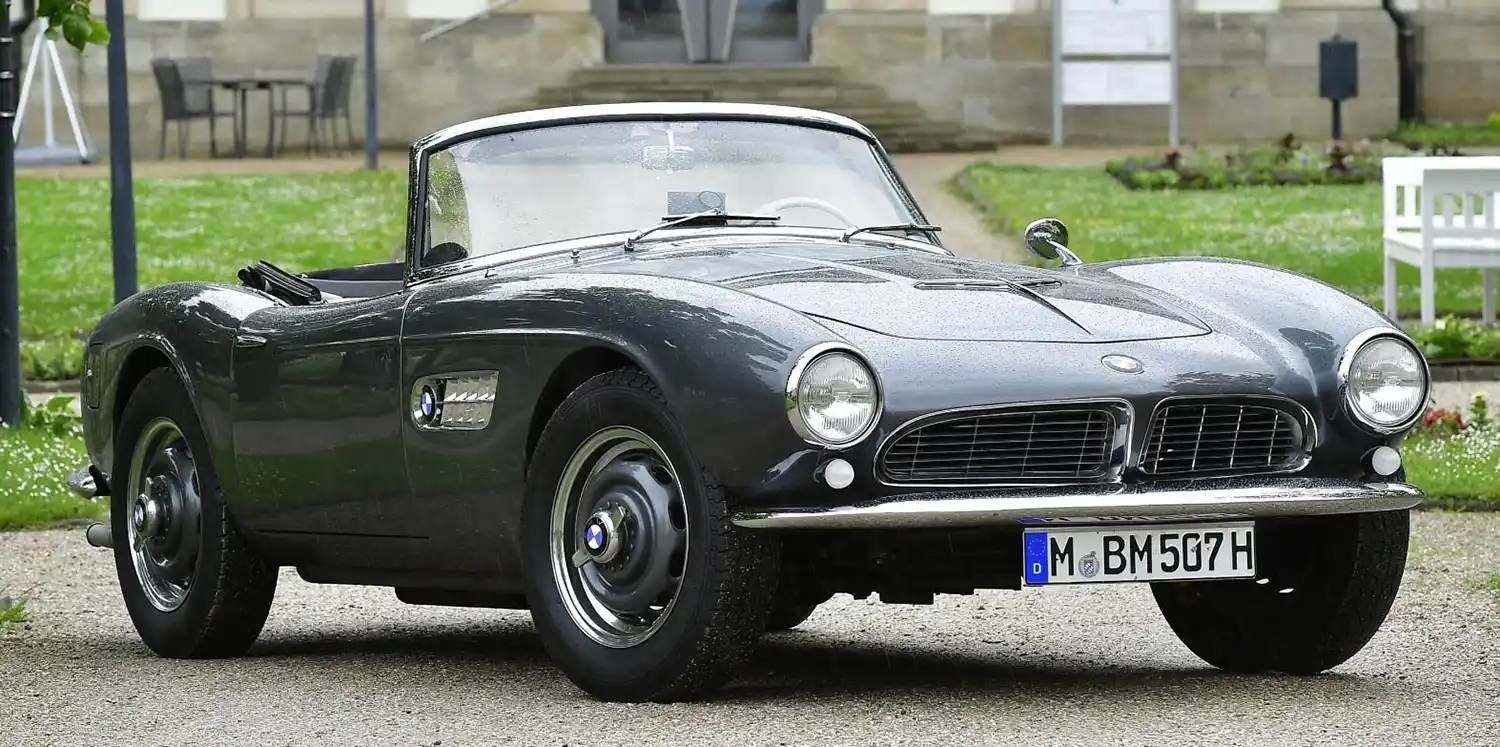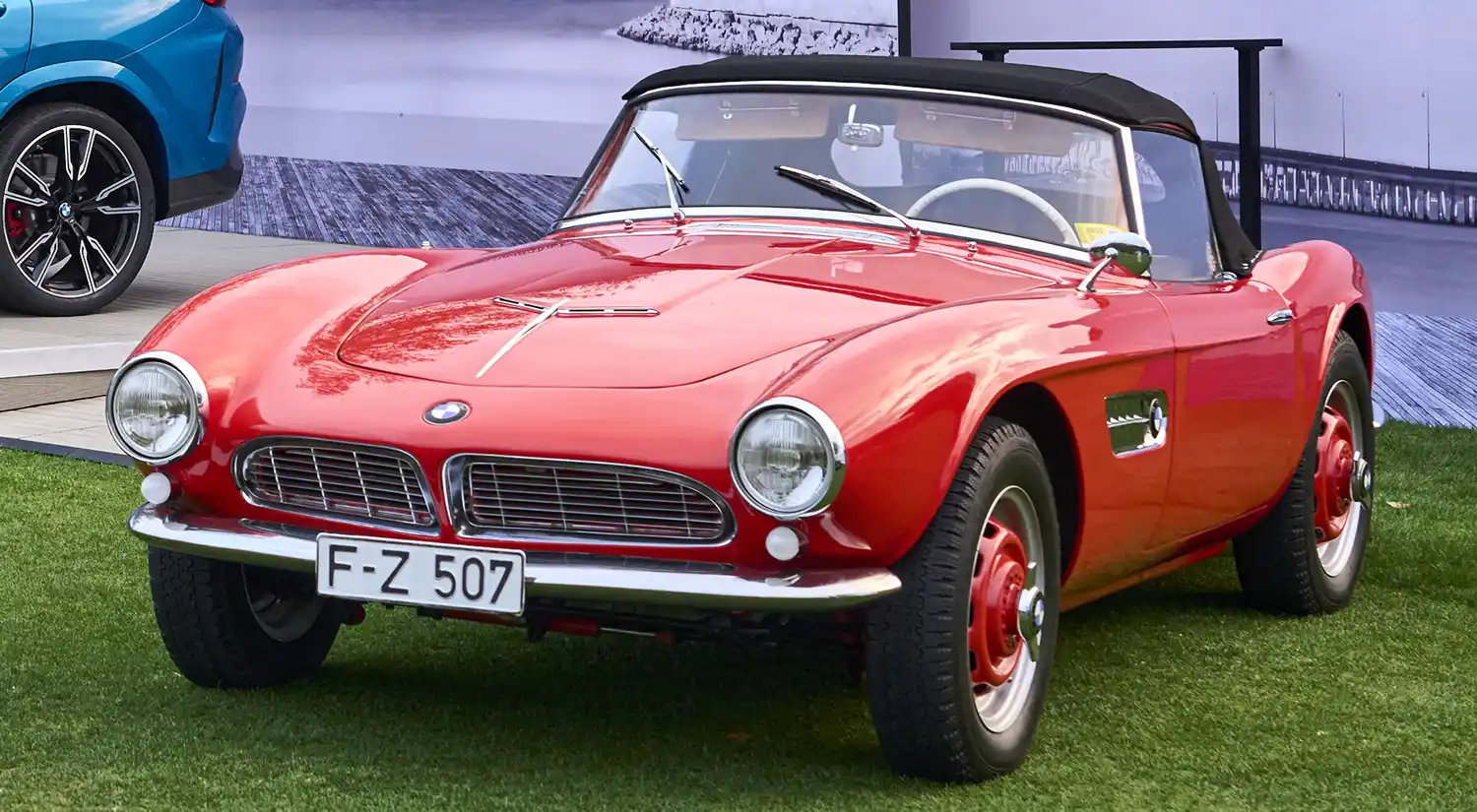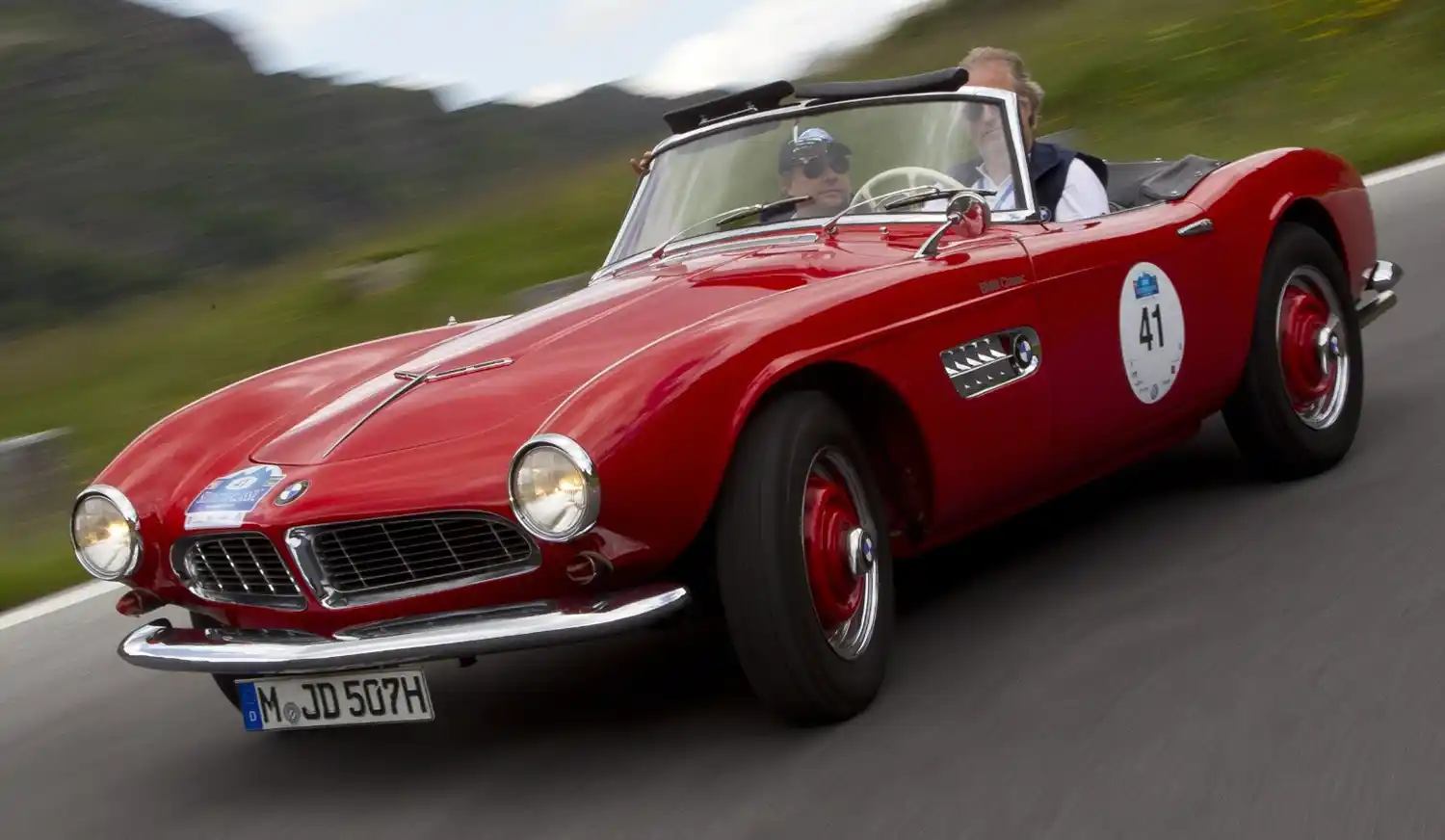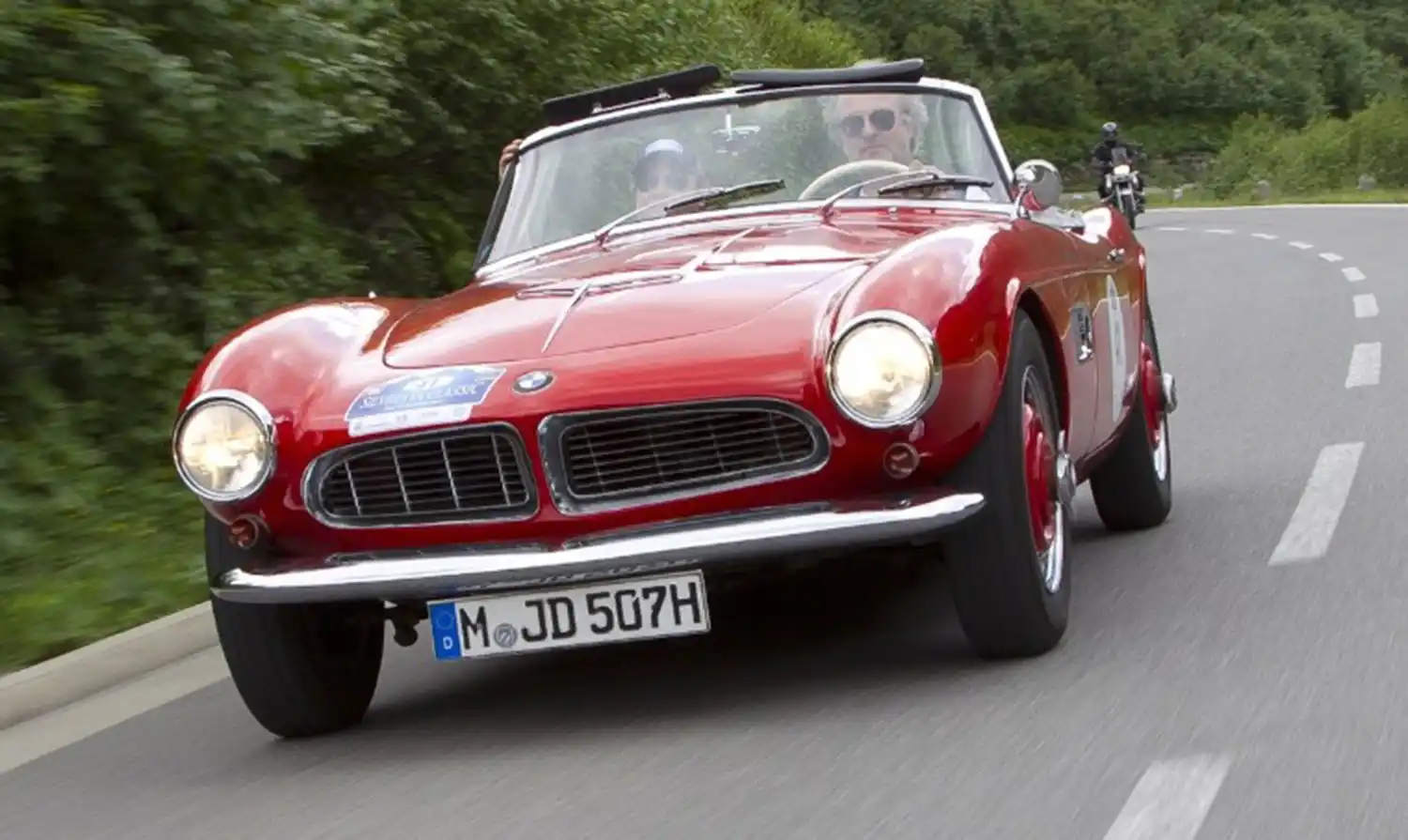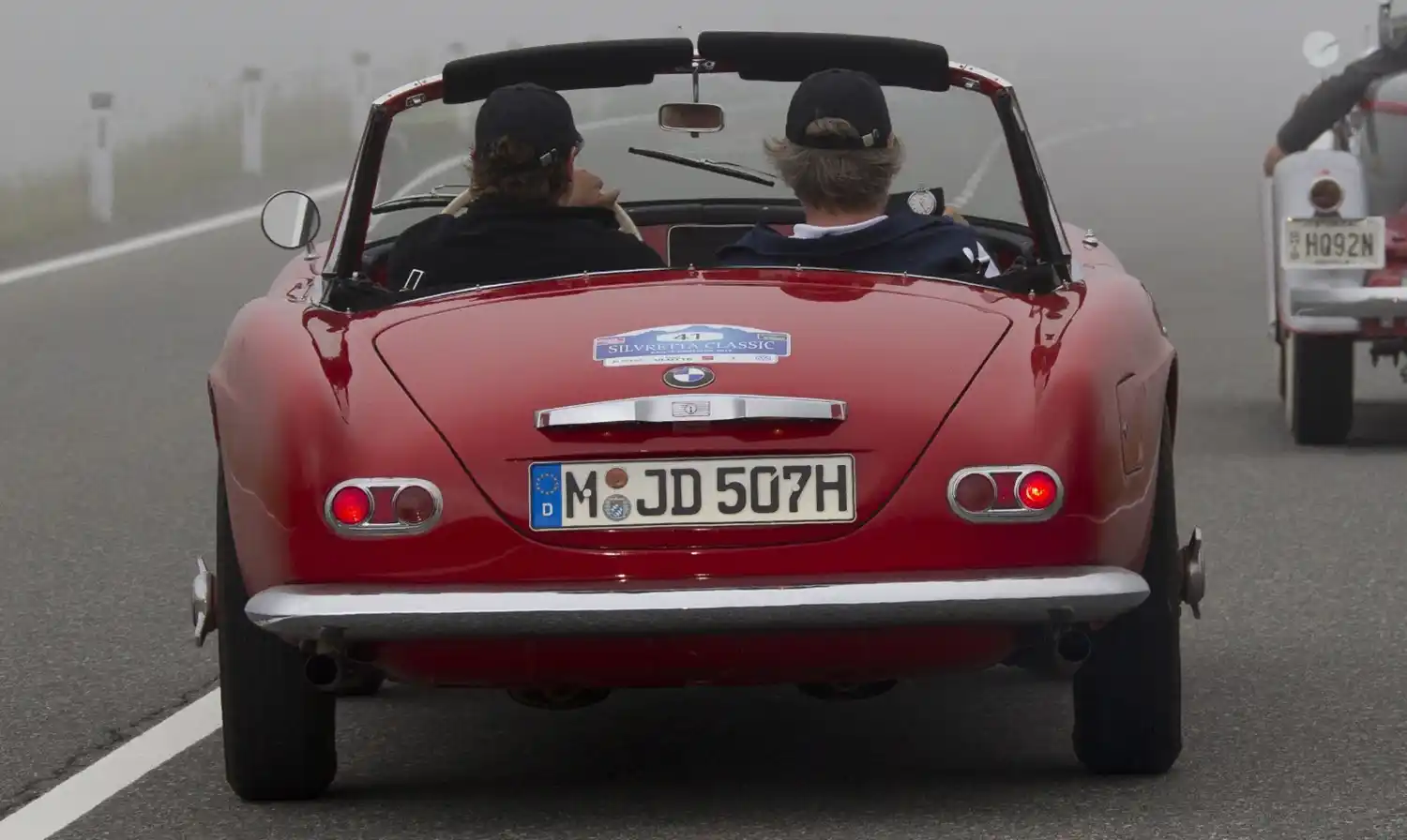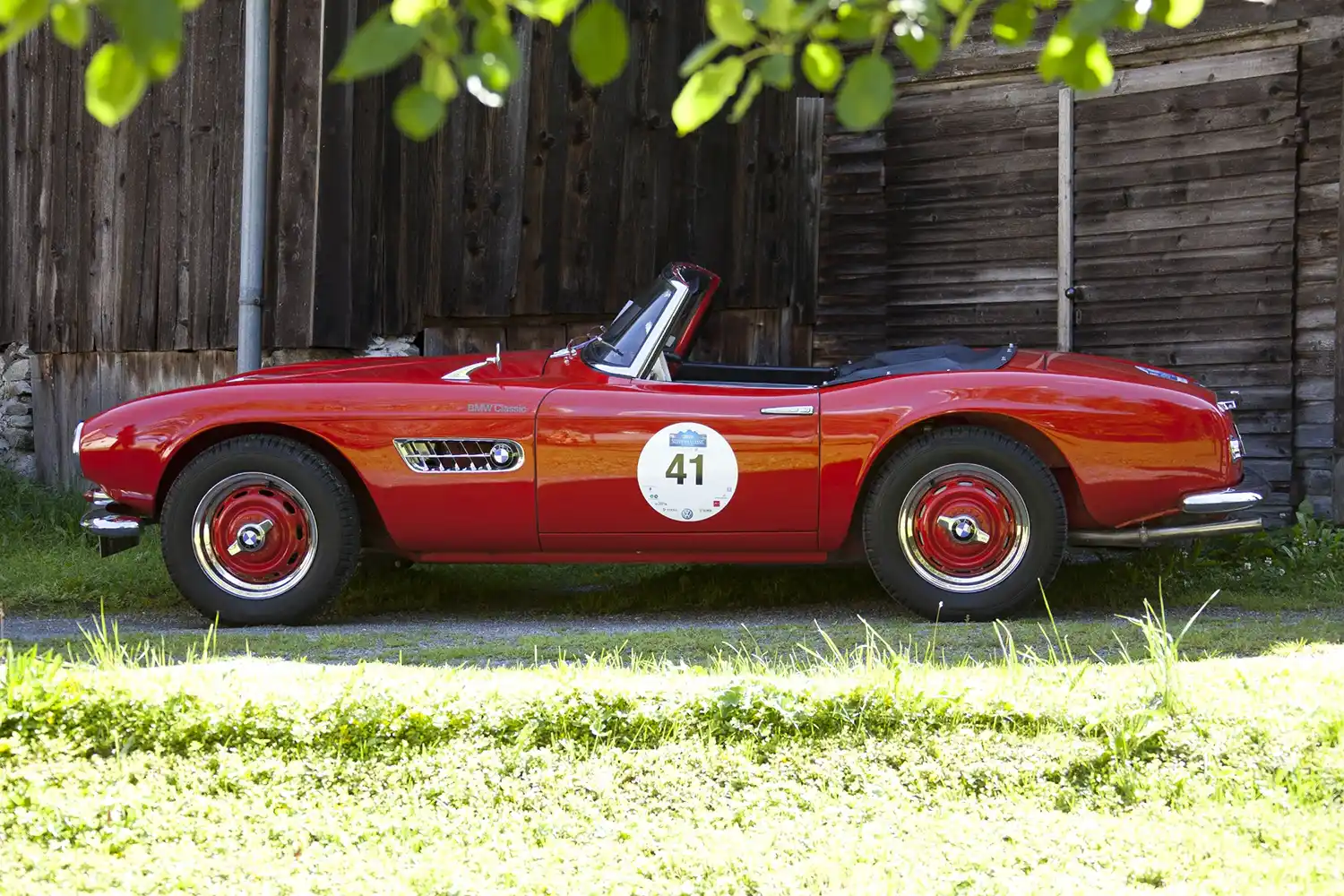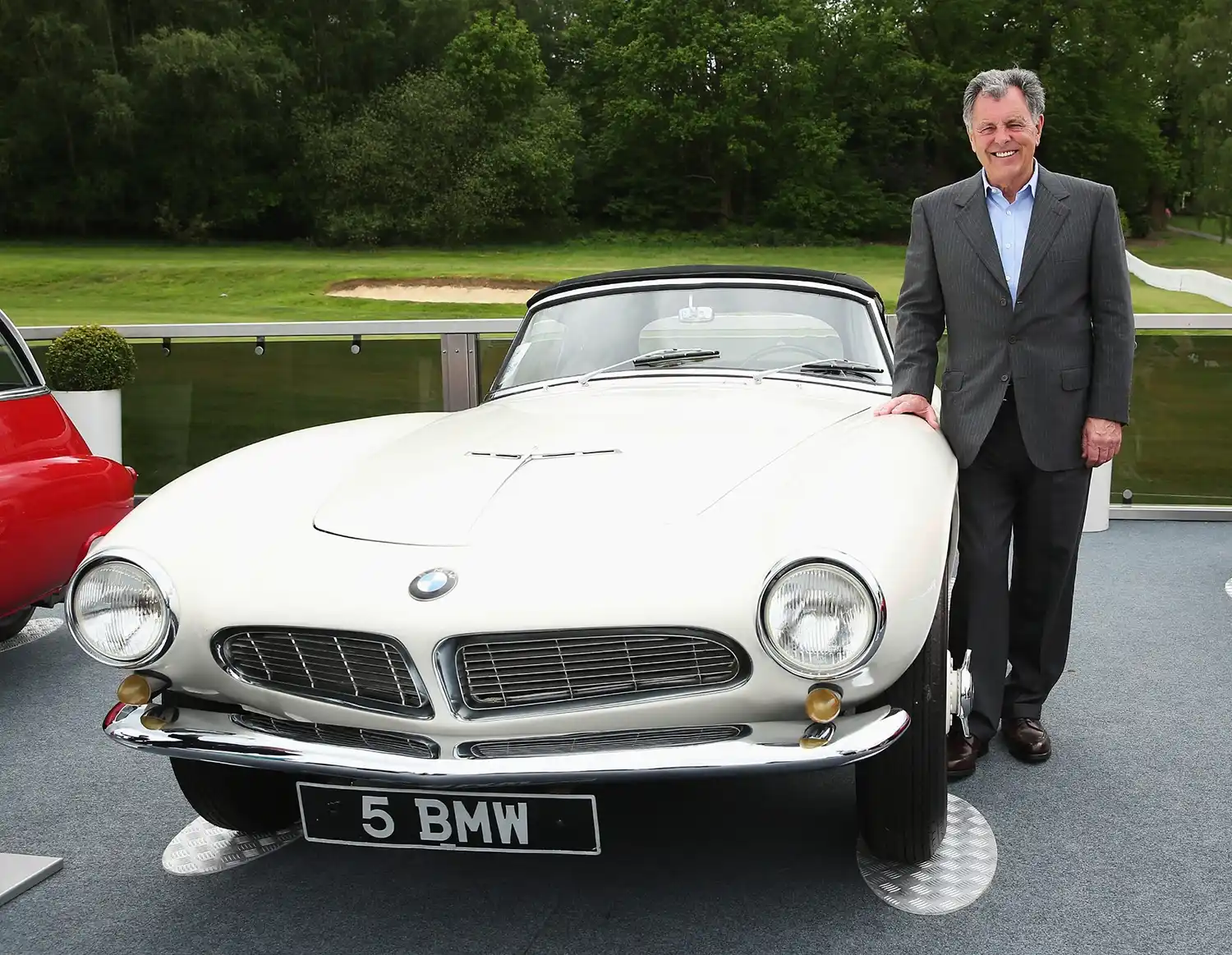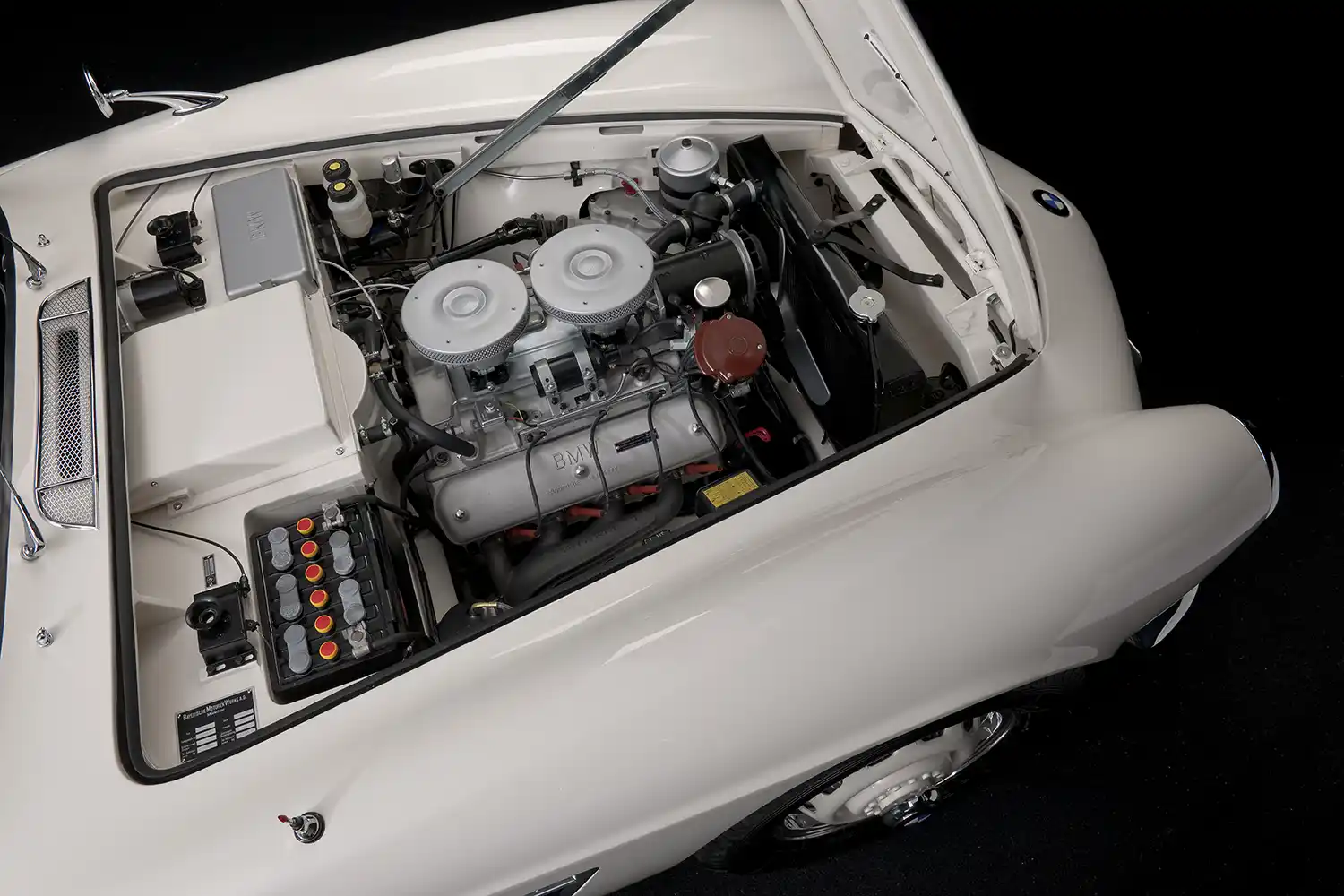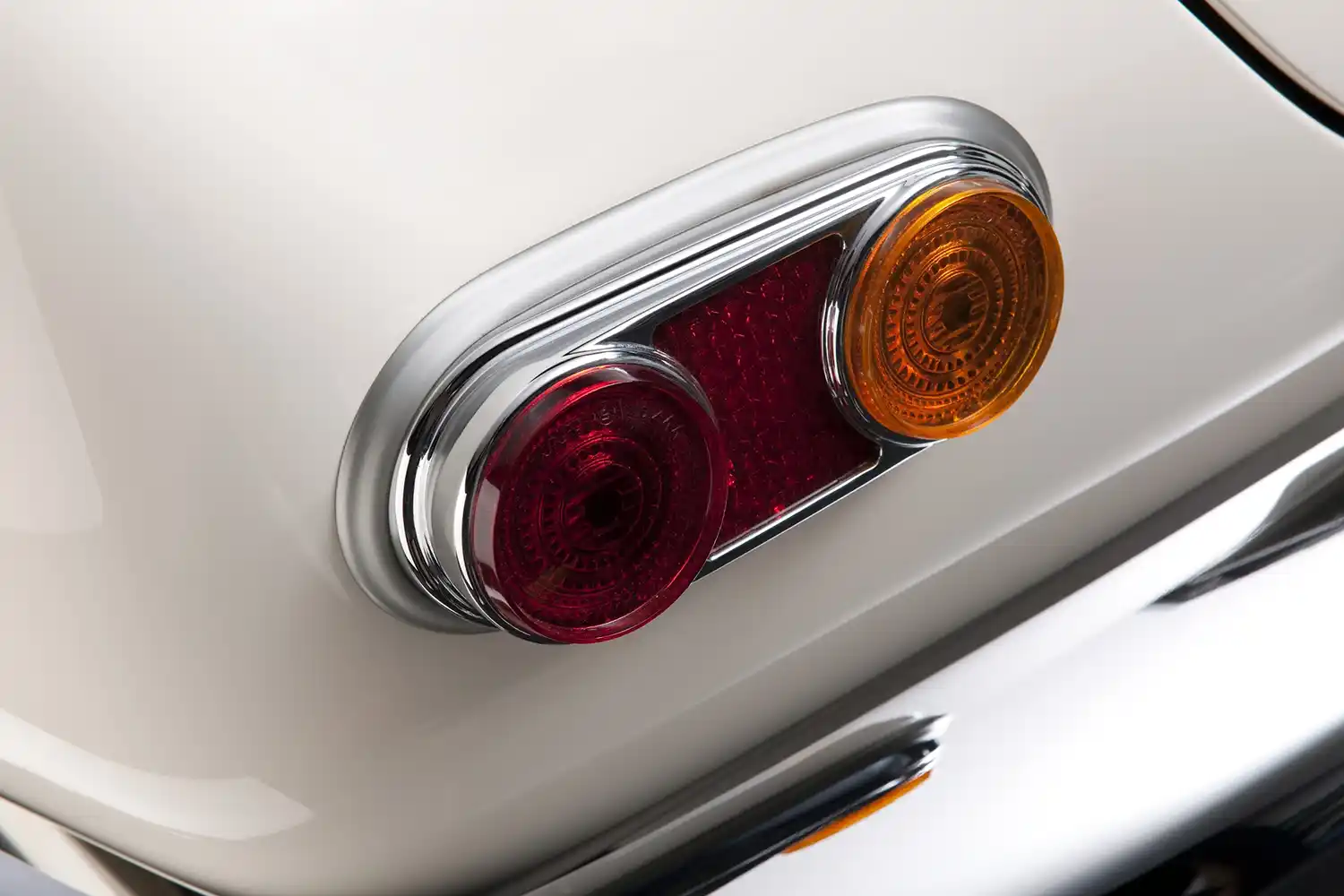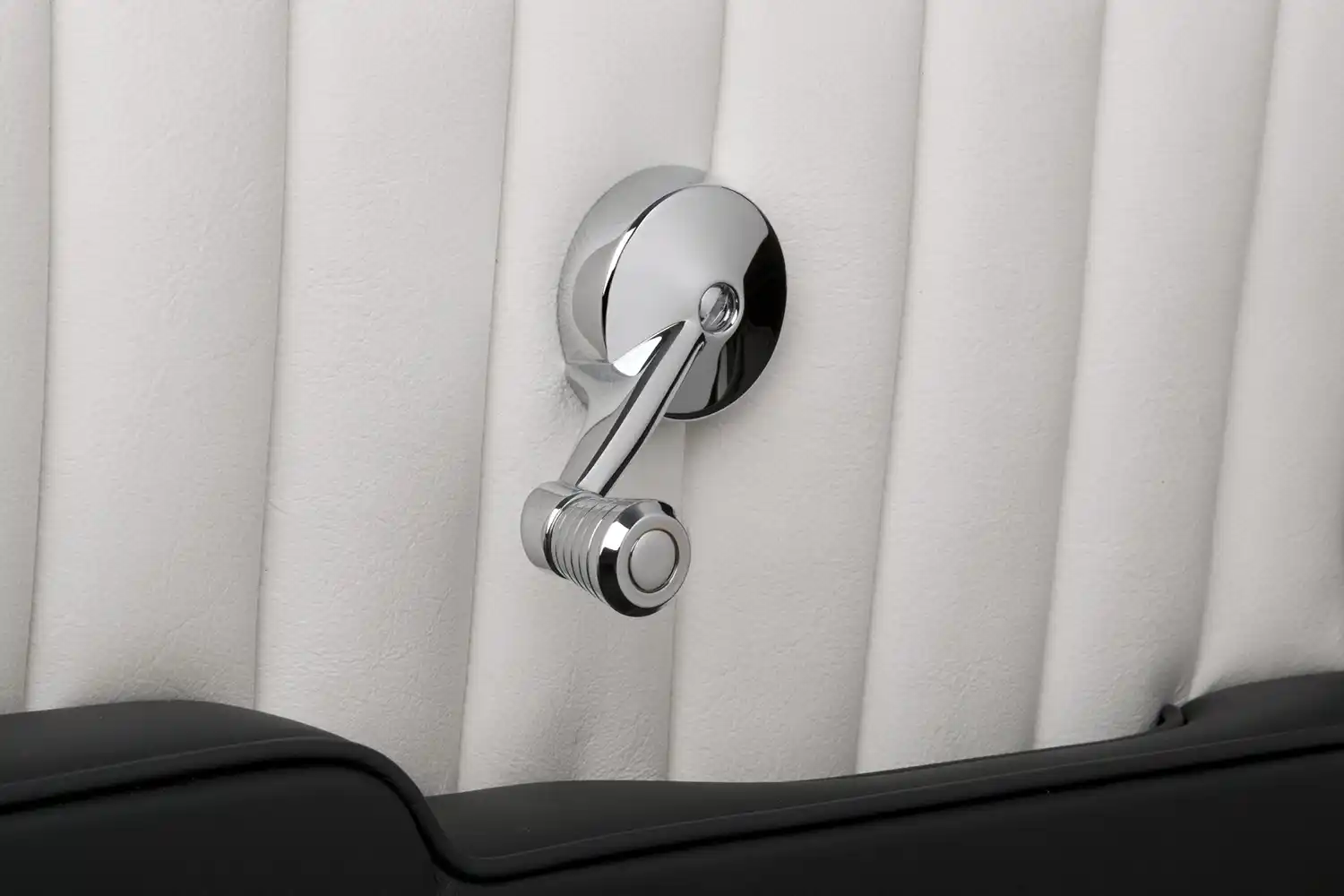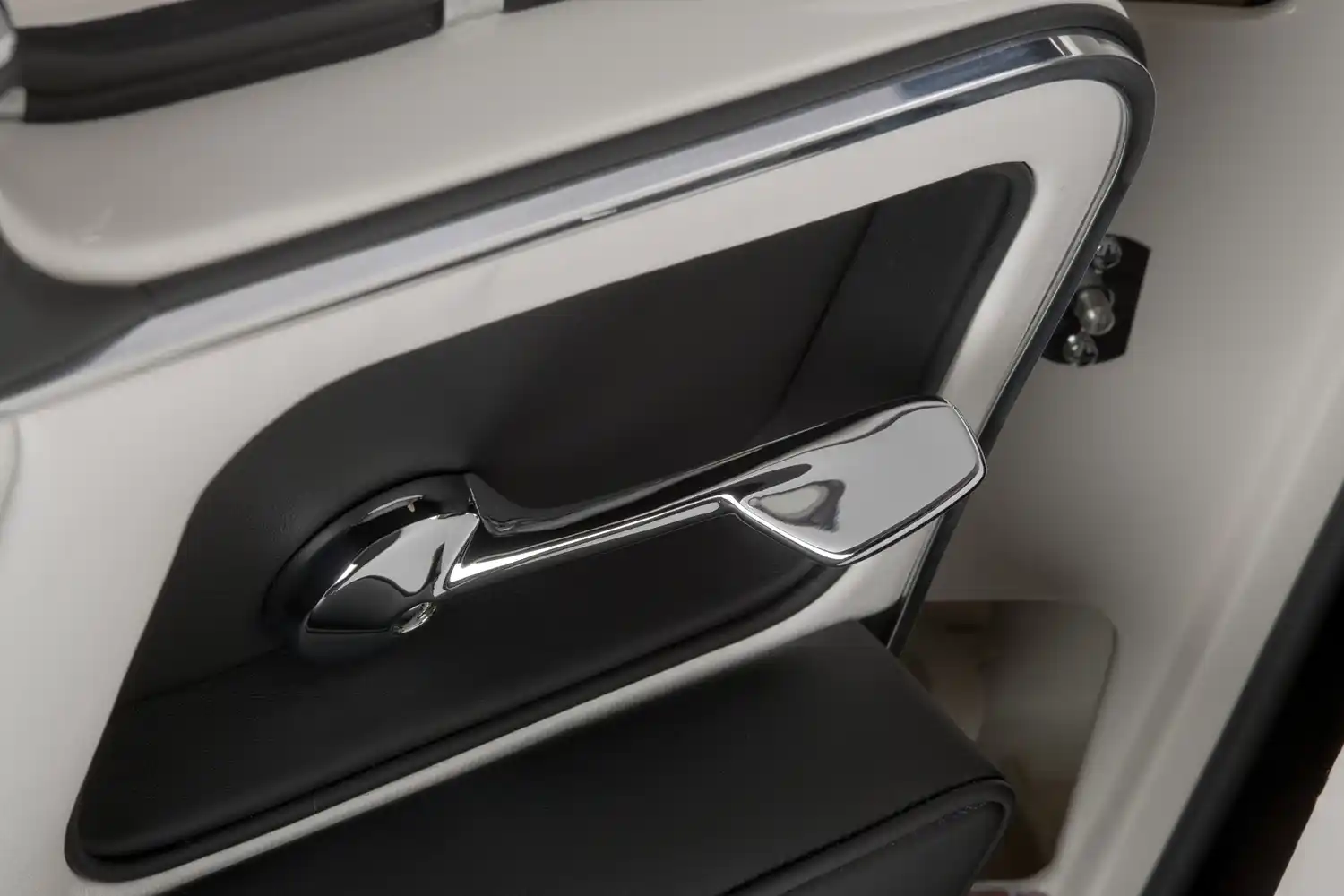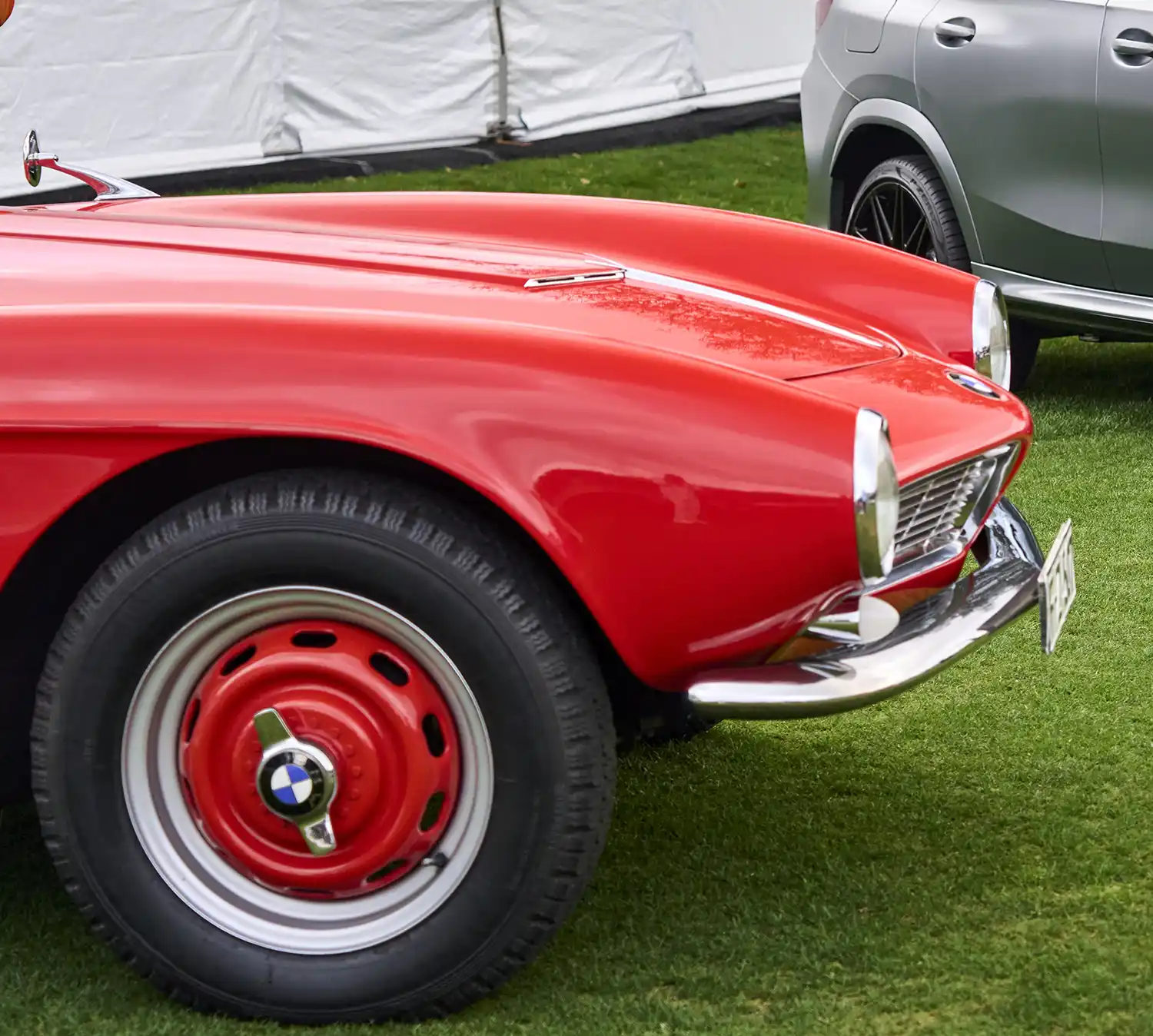
The BMW 507 is a roadster that was produced by BMW from 1956 until 1959. Initially intended to be exported to the United States at a rate of thousands per year, it ended up being too expensive, resulting in a total production figure of 252 cars and heavy financial losses for BMW.
The BMW 507 was conceived by U.S. automobile importer Max Hoffman who, in 1954, persuaded the BMW management to produce a roadster version of the BMW 501 and BMW 502 saloons to fill the gap between the expensive Mercedes-Benz 300SL and the cheap and underpowered Triumph and MG sports cars. BMW engineer Fritz Fiedler was assigned to design the rolling chassis, using existing components wherever possible. Early body designs by Ernst Loof were rejected by Hoffman, who found them to be unappealing. In November 1954, at Hoffman’s insistence, BMW contracted designer Albrecht von Goertz to design the BMW 503 and the 507.
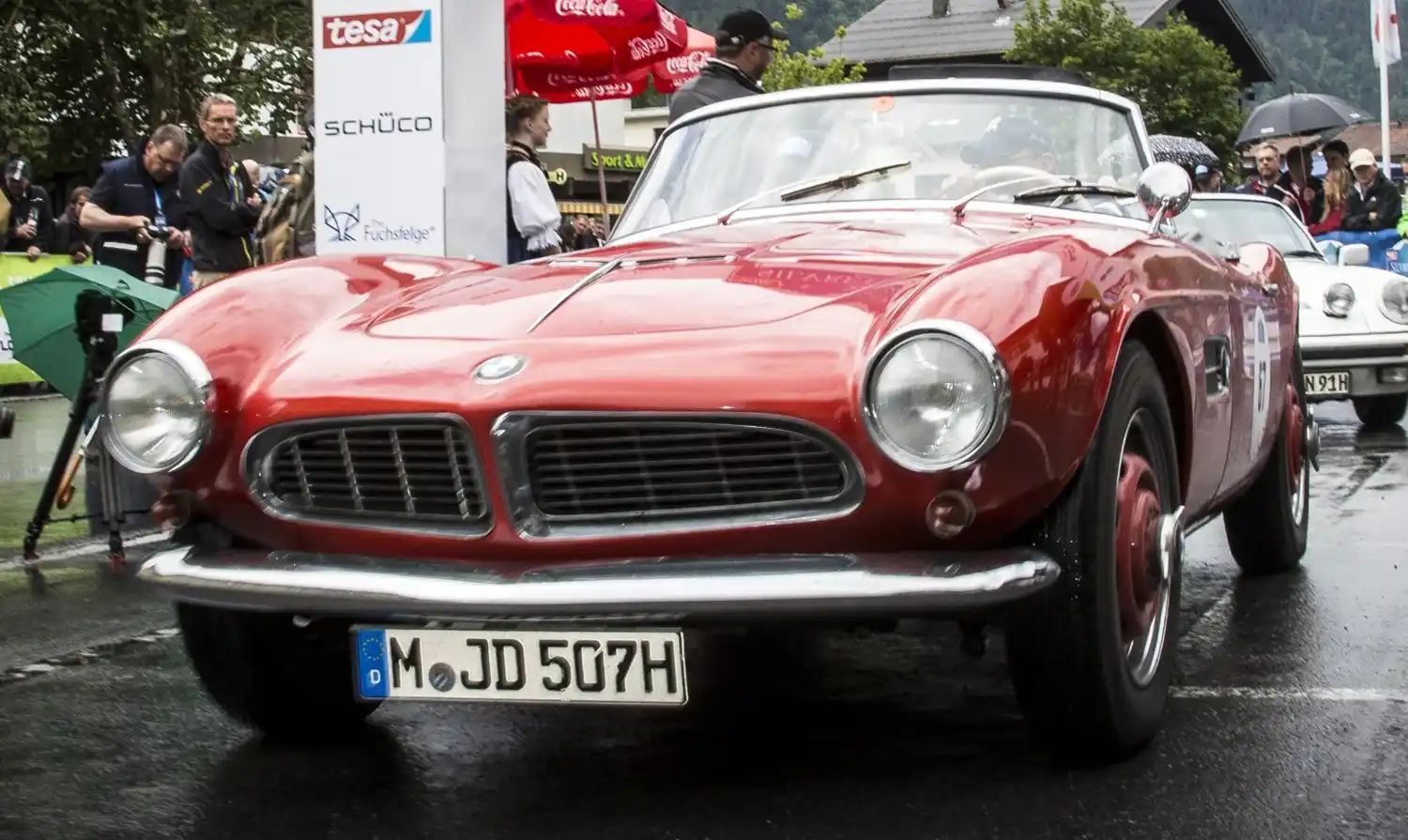
Thirty-four Series I 507s were built in 1956 and early 1957. These cars had welded aluminium fuel tanks of 110 litres (29.1 US gal) capacity behind the rear seats. These large tanks limited both boot space and passenger space, and gave off the smell of fuel inside the car when the soft top was up or the hardtop was in place. Series II and later 507s had fuel tanks of 66 litres (17.4 US gal) capacity under the boot, shaped around the space for the spare tyre.
The 507 frame was a shortened 503 frame, the wheelbase having been reduced from 2,835 millimetres (111.6 in) to 2,480 millimetres (98 in).
Overall length was 4,385 millimetres (172.6 in), and overall was 1,257 millimetres (49.5 in). Curb weight was about 1,330 kilograms (2,930 lb). The body was almost entirely hand-formed of aluminium, and no two models were exactly the same. 11 cars were sold with an optional hand-fabricated removable hardtop. Because of the car-to-car differences, each hardtop fits only the car for which it was made

The engine was BMW’s aluminium alloy OHV V8, of 3,168 cubic centimetres (193.3 cu in) displacement, with pushrod-operated overhead valves. It had two Zenith 32NDIX two-barrel carburetors, a chain-driven oil pump, high-lift cams, a different spark advance curve, polished combustion chamber surfaces, and a compression ratio of 7.8:1, yielding 150 metric horsepower (110 kW) DIN at 5,000 rpm. It was mated to a close ratio four-speed manual transmission. The standard rear-end ratio was 3.70:1, but ratios of 3.42:1 and 3.90:1 were optional. A contemporary road test of a 507 with the standard 3.70:1 final drive was reported in Motor Revue, stating a 0–100 km/h (0–62 mph) acceleration time of 11.1 seconds and a top speed of 122 mph (196 km/h).
The styling of the 507 later influenced the Z3, the Z4, and, most noticeably, the Z8,] with its chromed side vents and horizontal front grilles. The 507 remains a milestone model for its attractive styling. 202 507s are known to survive, a tribute to the car’s appeal

The BMW 507 has always been one of the most exclusive and sought-after rarities in the model history of the brand with just 254 automobiles being produced between 1955 and 1959. Right after its world premiere at the Frankfurt International Motor Show in 1955, the two-seater penned by designer Albrecht Graf Goertz was hailed in the press as the “Dream from the Isar”. Celebrity owners like Alain Delon, Ursula Andress and John Surtees contributed to the image of the roadster as a status symbol.
However, no other automobile of this model is shrouded in mythology like the BMW 507 once owned by Elvis Presley. This particular roadster was believed to have been lost for almost five decades. In fact, there was not even certainty about the chassis number of the car driven by the “King”. There were also doubts about whether Elvis Presley had ever transported the car back to the USA after he finished his military service in Germany, and nobody knew anything about the subsequent ownership of the car.
Source: bmw and wikipedia(Creative Commons Attribution-ShareAlike License 3.0)
